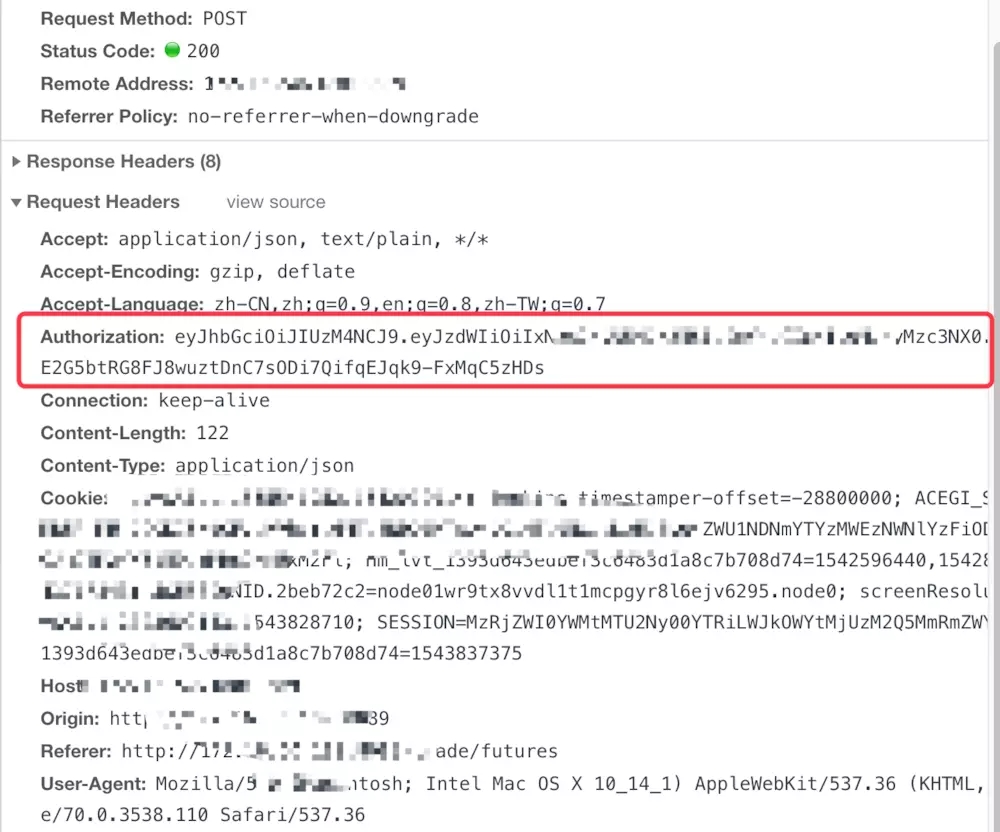Java中使用JWT生成Token进行接口鉴权实现方法
人气:2先介绍下利用JWT进行鉴权的思路:
1、用户发起登录请求。
2、服务端创建一个加密后的JWT信息,作为Token返回。
3、在后续请求中JWT信息作为请求头,发给服务端。
4、服务端拿到JWT之后进行解密,正确解密表示此次请求合法,验证通过;解密失败说明Token无效或者已过期。
流程图如下:

一、用户发起登录请求

二、服务端创建一个加密后的JWT信息,作为Token返回
1、用户登录之后把生成的Token返回给前端
@Authorization
@ResponseBody
@GetMapping("user/auth")
public Result getUserSecurityInfo(HttpServletRequest request) {
try {
UserDTO userDTO = ...
UserVO userVO = new UserVO();
//这里调用创建JWT信息的方法
userVO.setToken(TokenUtil.createJWT(String.valueOf(userDTO.getId())));
return Result.success(userVO);
} catch (Exception e) {
return Result.fail(ErrorEnum.SYSTEM_ERROR);
}
}
2、创建JWT,Generate Tokens
import javax.crypto.spec.SecretKeySpec;
import javax.xml.bind.DatatypeConverter;
import java.security.Key;
import io.jsonwebtoken.*;
import java.util.Date;
//Sample method to construct a JWT
private String createJWT(String id, String issuer, String subject, long ttlMillis) {
//The JWT signature algorithm we will be using to sign the token
SignatureAlgorithm signatureAlgorithm = SignatureAlgorithm.HS256;
long nowMillis = System.currentTimeMillis();
Date now = new Date(nowMillis);
//We will sign our JWT with our ApiKey secret
byte[] apiKeySecretBytes = DatatypeConverter.parseBase64Binary(apiKey.getSecret());
Key signingKey = new SecretKeySpec(apiKeySecretBytes, signatureAlgorithm.getJcaName());
//Let's set the JWT Claims
JwtBuilder builder = Jwts.builder().setId(id)
.setIssuedAt(now)
.setSubject(subject)
.setIssuer(issuer)
.signWith(signatureAlgorithm, signingKey);
//if it has been specified, let's add the expiration
if (ttlMillis >= 0) {
long expMillis = nowMillis + ttlMillis;
Date exp = new Date(expMillis);
builder.setExpiration(exp);
}
//Builds the JWT and serializes it to a compact, URL-safe string
return builder.compact();
}
3、作为Token返回

看后面有个Token
三、在后续请求中JWT信息作为请求头,发给服务端

四、服务端拿到JWT之后进行解密,正确解密表示此次请求合法,验证通过;解密失败说明Token无效或者已过期。
1、在拦截器中读取这个Header里面的Token值
@Slf4j
@Component
public class AuthorizationInterceptor extends HandlerInterceptorAdapter {
private boolean chechToken(HttpServletRequest request, HttpServletResponse response) throws IOException{
Long userId = ...;
if (!TokenUtil.parseJWT(request.getHeader("Authorization"), String.valueOf(userId))){
response.setContentType("text/html;charset=GBK");
response.setCharacterEncoding("GBK");
response.setStatus(403);
response.getWriter().print("<font size=6 color=red>对不起,您的请求非法,系统拒绝响应!</font>");
return false;
} else{
return true;
}
}
}
2、拿到之后进行解密校验
Decode and Verify Tokens
import javax.xml.bind.DatatypeConverter;
import io.jsonwebtoken.Jwts;
import io.jsonwebtoken.Claims;
//Sample method to validate and read the JWT
private void parseJWT(String jwt) {
//This line will throw an exception if it is not a signed JWS (as expected)
Claims claims = Jwts.parser()
.setSigningKey(DatatypeConverter.parseBase64Binary(apiKey.getSecret()))
.parseClaimsJws(jwt).getBody();
System.out.println("ID: " + claims.getId());
System.out.println("Subject: " + claims.getSubject());
System.out.println("Issuer: " + claims.getIssuer());
System.out.println("Expiration: " + claims.getExpiration());
}
五、总结
大家知道,我之前做过爬虫,实际这种思路在微博做反爬时也用过,做过我之前文章的同学应该知道。
您可能感兴趣的文章:
加载全部内容